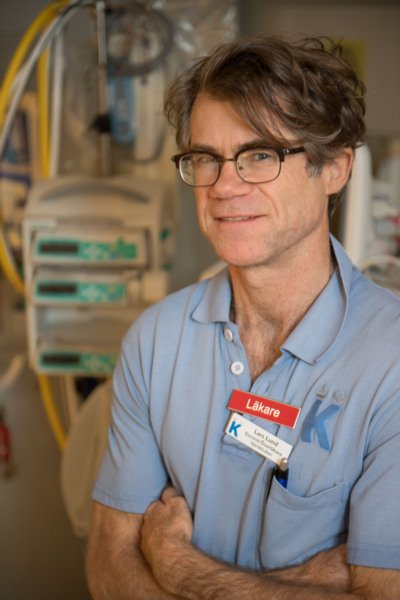Improving our understanding of diastolic heart failure
Findings about the causal relationship between heart failure and problems in the heart’s relaxation phase are relatively new. Lars Lund is conducting research into the underlying mechanisms of diastolic heart failure and how it can be treated.

What are you researching?
“I am doing research into heart failure. It is the leading cause of death and the most common reason for hospitalisation in the Western world, and also significantly reduces quality of life more than other chronic diseases. Heart failure means that the heart is incapable of pumping a sufficient amount of blood through the body. For the past hundred years, science has more or less assumed that all heart failure is systolic – in other words, that the root cause is that the heart has problems contracting. Not until the last fifteen year have we realized that it is just as common, and as serious, for heart failure to be caused by the opposite: that the heart muscle is in incapable of relaxing. It is this form of the disease, diastolic heart failure, that I am studying.”
What do you wish to accomplish?
“The objective is to understand the underlying mechanisms of the disease so that we can treat it. It has become increasingly clear that diastolic heart failure is in part its own disease. It has different causes than systolic heart failure and therefore requires different treatments. In order to achieve a broad picture of the onset and course of the disease, we are, in collaboration with several groups, working along the entire spectrum from epidemiology to very thorough clinical characterisation and experimental cell studies.”
How far have you gotten?
“We are working along two parallel tracks. Our earlier studies indicate that current drugs against fibrosis, scar formation, might be effective against diastolic heart failure, and we have now started a large registerbased randomised controlled clinical study to generate definite answers about this.
The other track is aiming at entirely new anti-inflammatory drugs. Of course, this is a lengthier journey, but we have made a lot of progress in our work by describing in detail the inflammatory changes that take place in the vessels and heart, and that we believe trigger the development of diastolic heart failure.”
Text: Anders Nilsson, in translation from Swedish, first published in the booklet From Cell to Society 2018
About Lars Lund
Professor of Cardiology at the Department of Medicine, Solna
Lars Lund was born in 1968 in Stockholm. He initially studied economics at the College of Charleston, South Carolina, USA, and worked for the World Bank from 1992 until 1995. After studying medicine at Duke University School of Medicine in Durham, North Carolina, USA, he earned his medical degree in 2000 and his American medical license in 2001. He has been active at Karolinska Institutet and Karolinska University Hospital since 2004.
Dr Lund became a specialist in internal medicine 2003 and in cardiology 2007. He defended his thesis in molecular biology in 2005 and became an Associate Professor of Cardiology in 2011. Lars Lund was appointed Professor of Cardiology at Karolinska Institutet on 1 May 2018.
